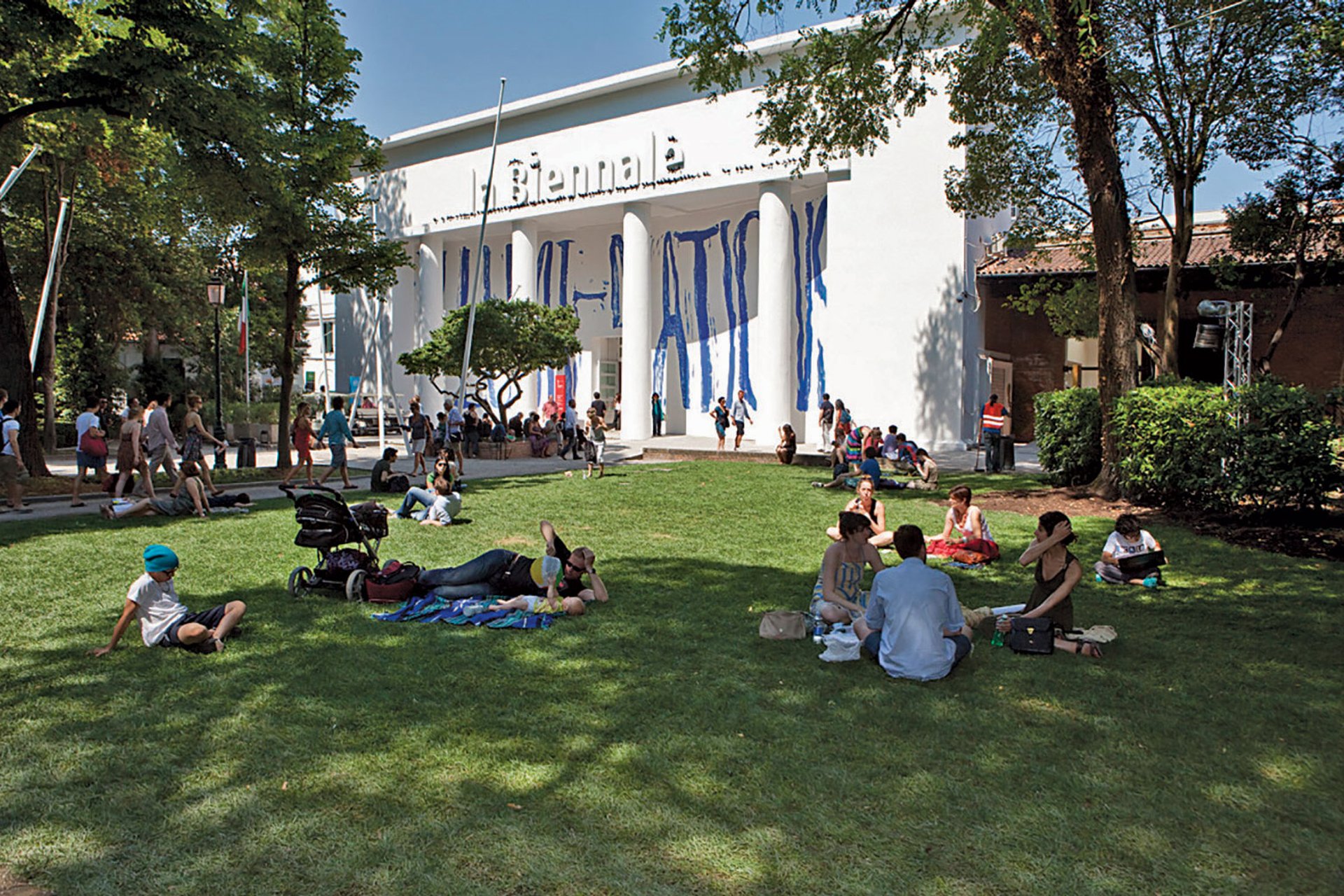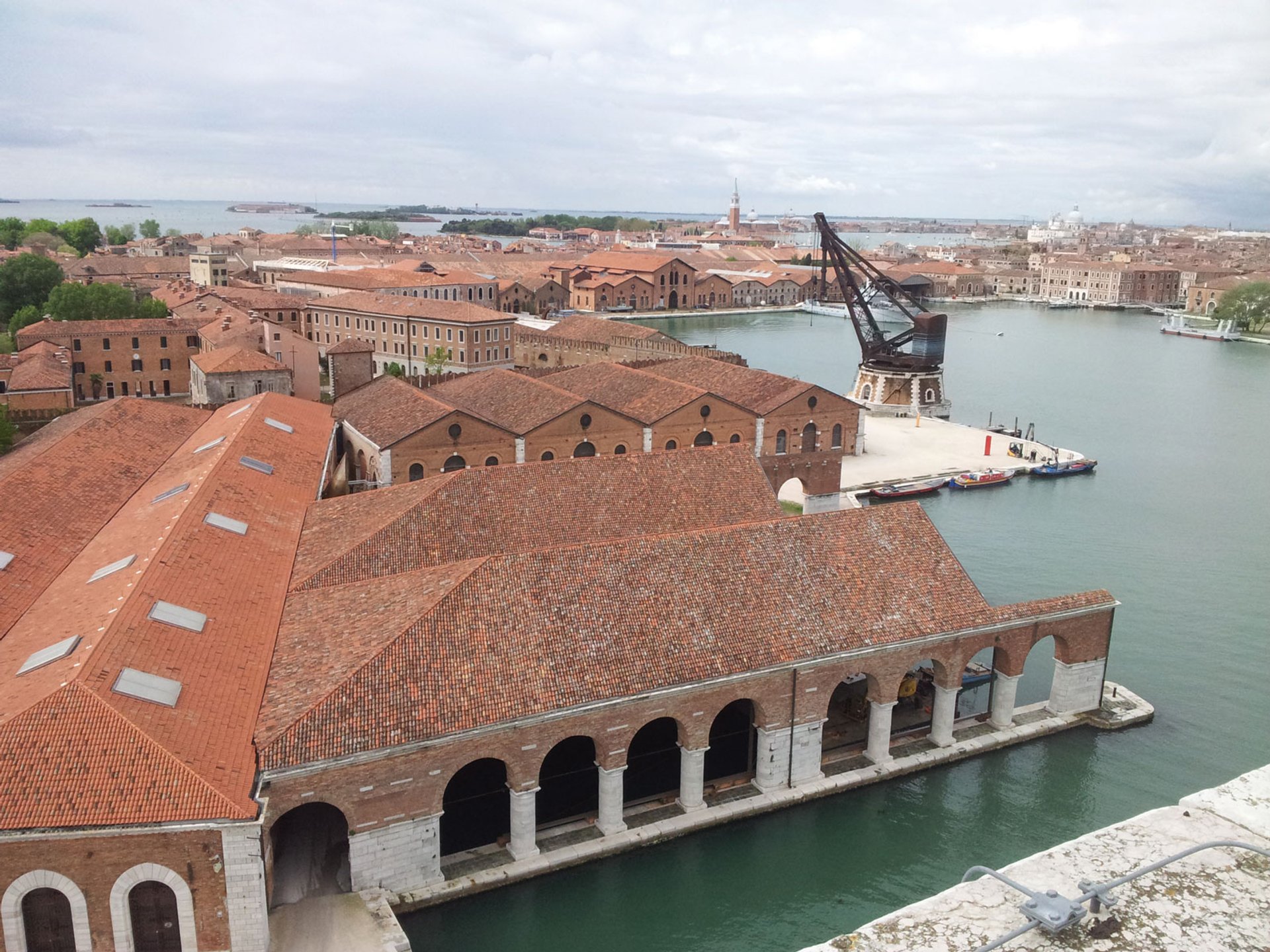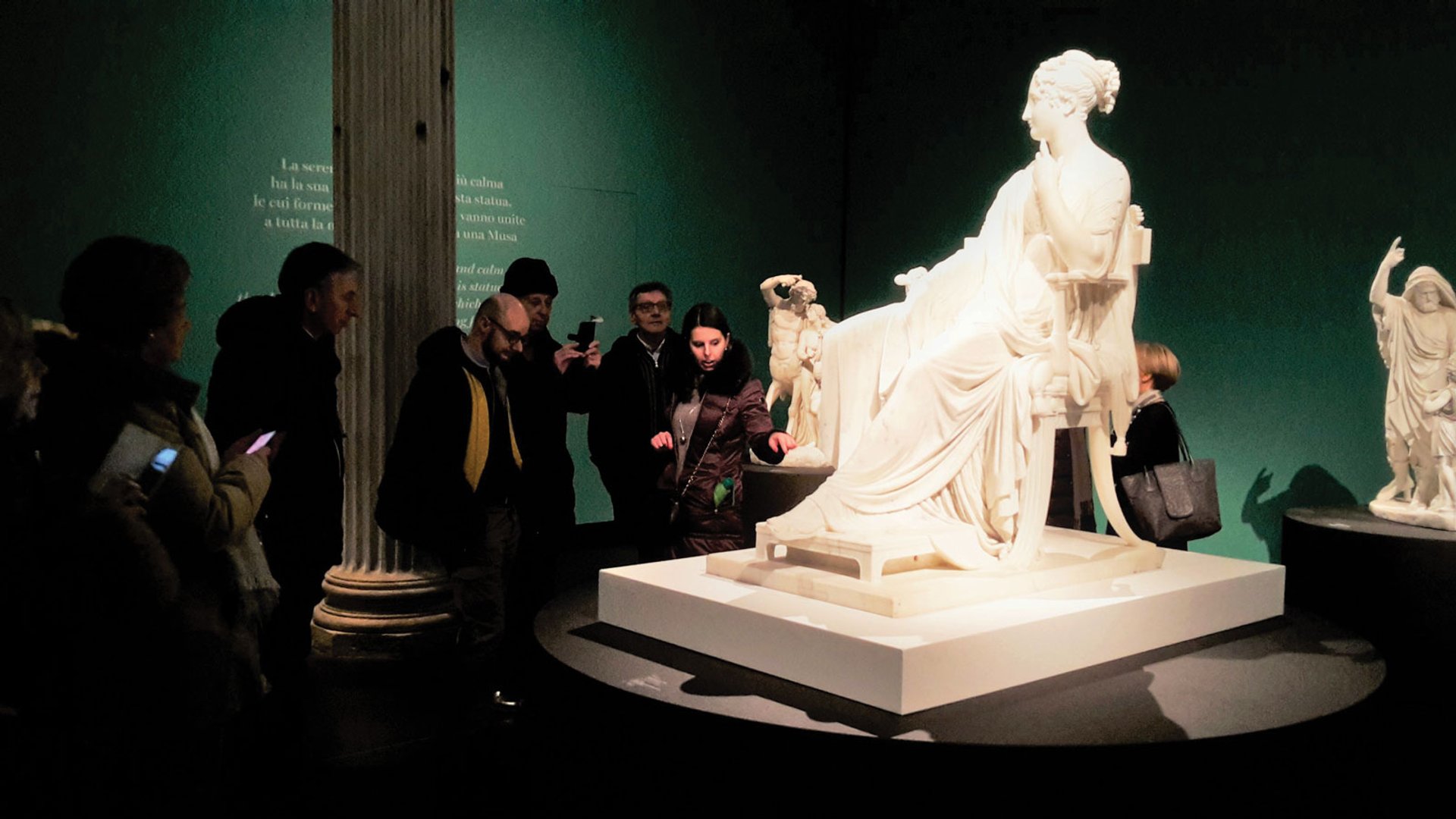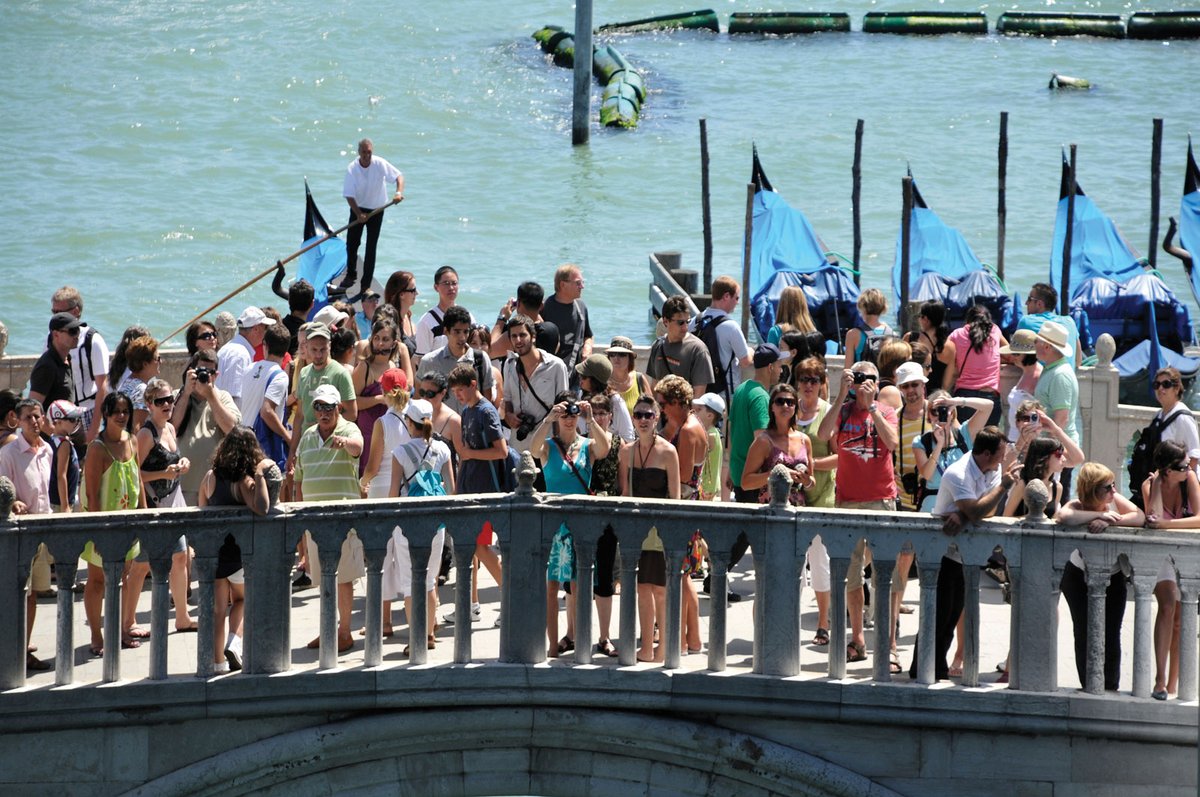"Venice is a perfect example of a city living off the very thing that is killing it.” This recent quote by the philosopher Giorgio Agamben, who lives an intentionally secluded life in Venice, underlines the city’s daily contradictions. It is increasingly a city of art, “invaded”, at an ever-growing rate, by tourists. And this invasion is consuming and weakening it as a city.
Six years ago, historic Venice, already in steep demographic decline, had around 60,000 residents. That number has now been reduced by another 10%, to around 54,000. Venice’s current institutions and foundations, or those that have emerged over the years, continue to put forward an offer that is excessive in relation to the city’s population, precisely because it is directed more towards its visitors than its residents. Some institutions, like the Venice Biennale, have become even more powerful and influential.
However, tourism pressure has further increased to the point of having almost wiped out its seasonal nature. The influx is continuous, at more or less the same level of intensity all year round as in spring and at the start of autumn—periods when, as summer extends, the city expands its cultural enterprises. And these have now all become very similar. This is because almost all the cultural institutions have their own bespoke exhibition programmes.
Residents leave their homes in the palazzi, which are then filled with exhibitions, or turned into hotels. Throughout this “showcase” city, fashion boutiques and 24-hour tourist supermarkets are found side by side with centres of culture. Almost everything is directed towards the enjoyment of culture, and much less at its production, even if there are those, such as the Biennale, that try to reverse the trend.
What is needed now, above all, is an umbrella organisation with the autonomy to force discussions between the city’s cultural institutions, and to consolidate them in order to create a stronger, united and partly integrated offer. The need to fulfil this role has been ignored for too long (theoretically, the City of Venice should be coordinating it), and this is evident in the culture, the frequent overlapping of events, and the continually lost opportunities to create a system.

Tourists enjoying the Giardini during the Biennale IR, 2017/italorondinella.com
The Biennale
Learning and expansion
For many years, the Biennale has marked the beginning of Venice’s spring and summer cultural season. There is the International Art Exhibition throughout the city, with outside pavilions and collateral shows. There is also the International Architecture Exhibition, held in alternate years, and, of course, the Venice Film Festival. Everyone settles into the Biennale’s rhythm and tries to take advantage of the knock-on effects, which delight the hoteliers, because of the quality of visitors it attracts. However, under the guidance of Paolo Baratta, whose third term as president comes to an end next year, the Biennale has become the only cultural institution in Venice to have a continuous and considered cultural programme.
In his current term as president, Baratta has concentrated on space for the Biennale and on training, as well as exhibitions and the development of the Biennale’s archive. Each year he adds new events and initiatives to the foundation’s other established areas: the Dance Festival, the Music Festival and the Theatre Festival. One such initiative is the Biennale College, a project developed by the foundation to train young people in the arts. It also provides internships for final-year students who are put in touch with the maestros of the various disciplines—dance, music, theatre, and now cinema, with a section dedicated to virtual reality. Only the visual arts are missing.
The Biennale Sessions, which run during the international art and architecture exhibitions, offer a series of events to universities, fine arts academies, higher education institutes and research centres, linking lecturers and students together in seminars and training courses in Venice.
Baratta’s other objective is to find more space because of the Biennale’s ever-expanding events. The foundation’s expansionary policy has meant taking over new ground in the Arsenale: in addition to the Corderie and Artiglierie, it now has the 16th-century Tese, the Gaggiandre, the Giardino delle Vergini, the Teatro Piccolo Arsenale, and also the Sale d’Armi, rescued with donations from foreign countries in order to develop the new international pavilion area. Meanwhile, the nearby island of Lazzaretto Vecchio will host the virtual reality section of the Venice Film Festival.
Under Baratta’s presidency, the Biennale has become the most powerful and influential Italian cultural institution in the contemporary sector, reflecting its president’s aims and aspirations. It remains to be seen whether this success will continue after his departure.

The Arsenale Andrea Avezzù; Courtesy of La Biennale di Venezia
The Arsenale
A wasted opportunity
It was hoped that the Arsenale would become Venice’s new centre for cultural production. However, the Serene Republic’s old naval complex is still underused and half-abandoned. It has a short season each year between spring and summer, when the Biennale occupies part of the space where it has concessions to hold its biennial art and architecture exhibitions. It fills up with visitors who see its extraordinary potential, then returns to its sleepy state. The Italian Navy still occupies around 40% of the space and resists giving it up: it confines itself to patrolling the area and running operations such as the Institute of Maritime and Military Studies.
The concept of a large maritime museum, which was proposed several years ago as a means of maintaining this area, has remained unrealised due to lack of funds. The City of Venice, which reclaimed the complex from the state six years ago, receives around €360,000 in annual concession fees and rent of around €1,700,000 from Vela (the council’s subsidiary company responsible for Venice’s exhibitions) and says it does not have sufficient resources to do anything else. No mention is made of a project for reusing the complex, to the extent that, following the winding up of the combined City of Venice, Demanio, and Arsenale Venezia SpA company, which for several years had managed the reuse of the area, there is no longer an organisation directly responsible for it.
For now, the only future marked out for the Arsenale is that of becoming the worksite for maintaining Mose (the system of moveable barriers developed to guard against future high tides), to periodically clean sea deposits from the dismantled floodgates and then reposition them. The few other remaining organisations, such as Thetis, the Environmental Engineering Agency, are on the brink of failure. Civic associations such as Futuro Arsenale want it to be reopened to host events linked to the shipbuilding industry, Venetian artisanship and culture. But no one is interested.

The Fondaco dei Tedeschi, known for Giorgione and Titian’s frescoes and now a luxury store Dimitris Kamaras
Venice’s historic buildings
Engulfed by Mammon
Either hotels or shops: that is the fate of Venice’s historic buildings that are no longer lived in or occupied by public bodies. The direction of the property market, which is increasingly geared towards tourism, and the constant drop in resident numbers, have led inevitably to this situation, and there are few exceptions. Even the department in charge of buildings has, for some time now, relaxed the rules in order to prevent abandoned buildings from falling into disrepair.
In the past two years alone, the 16th-century Fondaco dei Tedeschi (the former Rialto Central Post Office), with its frescoes by Giorgione and Titian, has been turned into a large luxury store for the French-Far Eastern brand DFS, complete with a typical Venetian wooden terrace, designed by Rem Koolhaas, giving panoramic views over the Grand Canal. The historic former Pilsen Brewery, behind St Mark’s Square, was sold to the City of Venice and turned into a clothes store for the Spanish brand Zara. And the former Cinema Teatro Italia, which dates from the beginning of the 20th century, has been turned into a Despar supermarket, selling salami, cheeses and frozen food amid frescoes and preserved neo-Gothic and Art Nouveau wall decorations. The former head office of the Catasto in the Rialto will be a four-star Spanish hotel when it reopens. The same fate has befallen the Ca’ di Dio, in Riva dei Sette Martiri. This is one of the historic centre’s largest nursing homes, owned and run by the Venetian institute that is also responsible for its upkeep (the Istituto di Ricovero e Educazione). It has just granted a licence for it to be turned into a hotel, which will be called the Gran Meliá Ca’ di Dio, complete with a private swimming pool. The Venetian Chamber of Commerce head office (Camera di Commercio) on Calle Larga XX Marzo was also sold, to a large French firm with dealings in the hotel and finance sector. The building dates back to the 1920s and, in all likelihood, will become a new luxury hotel on the edge of the St. Mark’s sestiere.
Last year the City of Venice sold two buildings to the company belonging to the Singapore entrepreneur Ching Chiat Kwong: Palazzo Donà, which housed social services, in Campo Santa Maria Formosa, and the city police headquarters in Palazzo Poerio Papadopoli, a short distance from Piazzale Roma. These will most likely also become luxury hotels.
Then there are the abandoned Murano glassworks. Because of a crisis in the island’s glass industry, the new business is to transform them into hotels. The city council is now trying, at least formally, to address this problem with a recently approved resolution that will block changes in the use of buildings aimed at creating hotels. However, the resolution gives the council the option of granting special dispensations, and there is a long series of potential triggers. They include the extent of public benefit, which aspiring hotel entrepreneurs will be inclined to bring to the council’s attention in exchange for a green light to change buildings into hotels. If they are generous, they are likely not to be disappointed.

The Accademia exhibition Canova, Hayez, Cicognara: the Last Glory of Venice Amici dei Musei e dei Monumenti
Gallerie dell’Accademia
A new energy
According to Italy’s Ministry for Cultural Heritage, the Gallerie dell’Accademia was in second place to Rome’s National Gallery of Modern Art in 2017 in terms of growth at state museums, with an increase of 83% in visitor numbers and 205% in revenue. The Gallerie dell’Accademia is undoubtedly in a healthy state after some difficult years owing to the slow progress of its new wing, designed by Tobia Scarpa.
Credit for the museum’s growth must go to the autonomy granted by the minister Dario Franceschini’s reform of state museums, but above all to the guidance of the museum’s director, Paola Marini, who was previously head of Verona’s civic museums. Among other things, Marini has collaborated closely with the Fondazione Musei Civici Veneziani, and with its director Gabriella Belli, also from Verona. Together they are organising September’s great double event (at the Doge’s Palace and the Gallerie dell’Accademia) to celebrate the 500th anniversary of Tintoretto’s birth.
While waiting to transfer sections of the museum permanently to the new wing—in particular the 17th, 18th and 19th-century displays—the director has made use of the ground floor spaces for high-quality exhibitions, taking advantage of the gallery’s bicentenary. Among the successes were Venice-themed shows, such as L’ultima gloria di Venezia (The Last Glory of Venice), on the city’s 19th-century cultural reawakening, through the works of Canova, Hayez and Cicognara.
There are also displays of important acquisitions, such as Vasari’s cycle of allegorical paintings that once decorated the ceiling of Palazzo Corner Spinelli, and will again be united following the recent acquisition of the panel featuring an allegory of hope. Notwithstanding the current building works and the unfinished projects, there is undoubtedly a new energy at the Accademia and the impression of a museum that is aspiring to enhance its collections through exhibitions that attract the contributions of sponsors and private committees concerned with safeguarding Venice.
It is important that the Ministry for Cultural Heritage no longer depletes the museum of its masterpieces, as happened in recent years with promotional exhibitions in Asia, Russia and elsewhere. With the completion of the new wing, the museum aims to exhibit around a third more of the works currently in storage.
• Enrico Tantucci is a journalist at La Nuova Venezia




